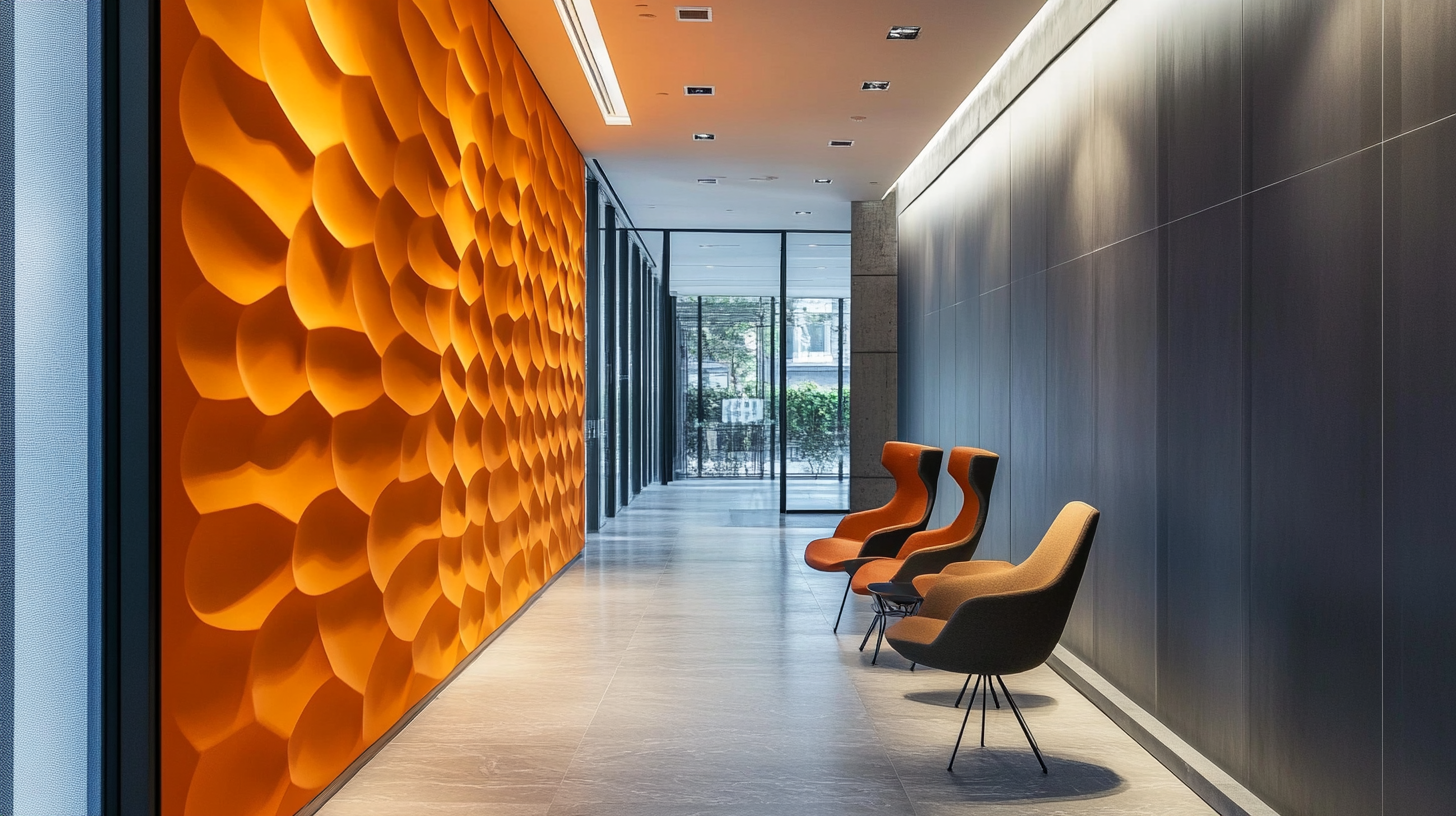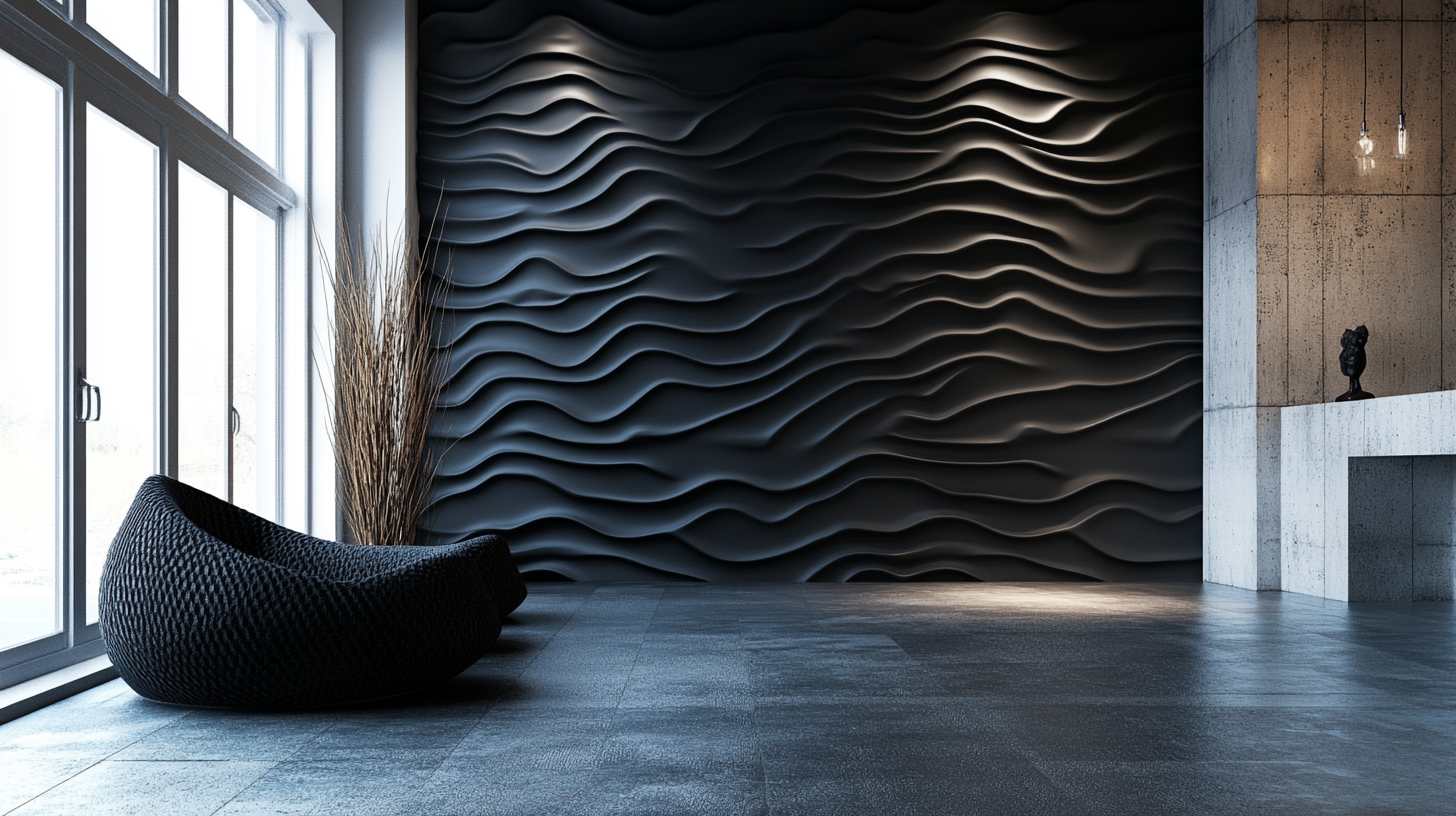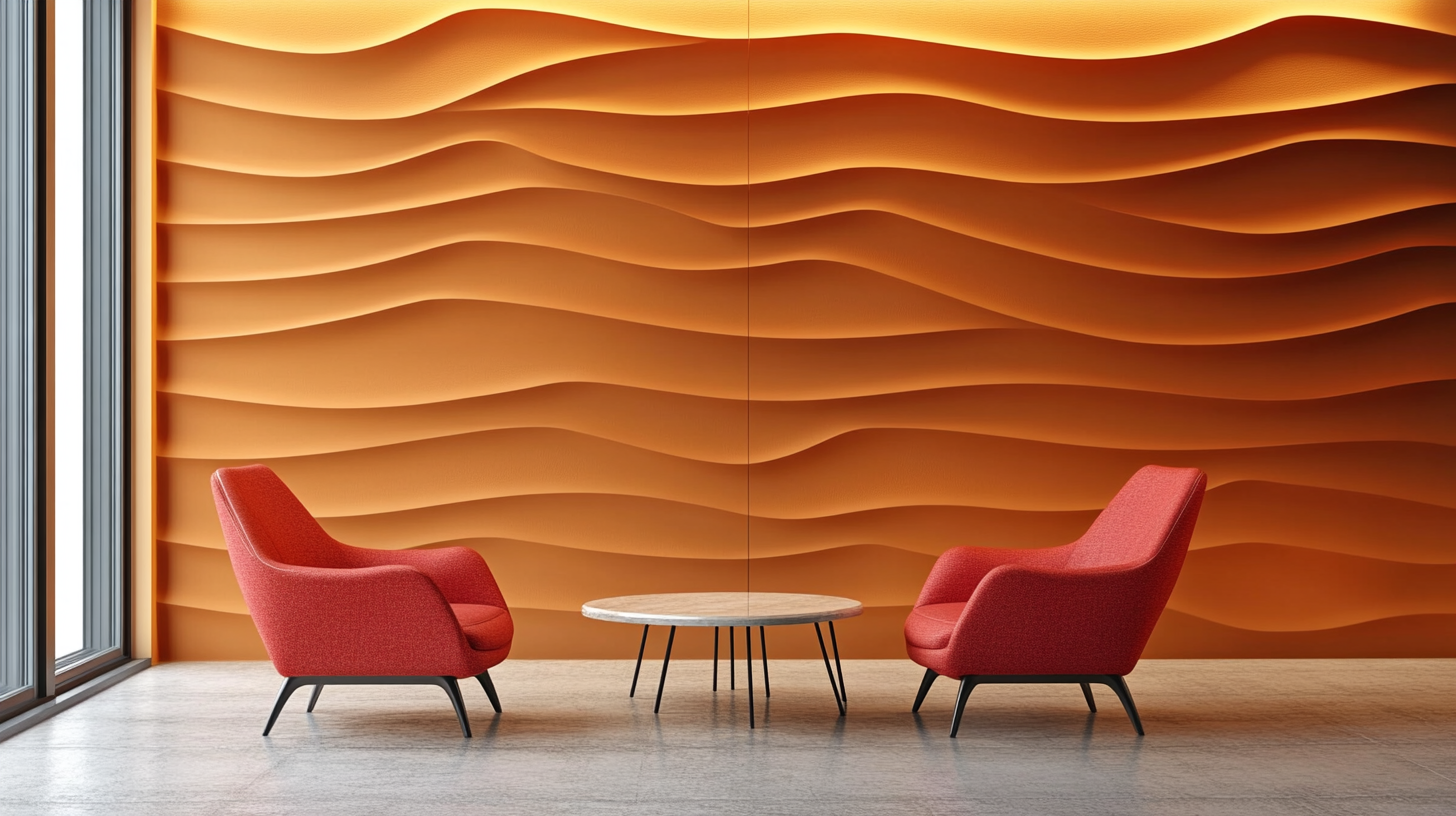Shandong Xiangying New Materials Technology Co., Ltd.
Shandong Xiangying New Materials Technology Co., Ltd.
As the world of interior design continues to evolve, one element that has emerged as a significant trend is the use of 3D wall panels. These innovative design features not only transform ordinary spaces into visually striking environments but also reflect a shift towards more sustainable and customizable design solutions. The growing interest in 3D wall panels is driven by their versatility, allowing designers and homeowners alike to create unique aesthetics that merge function with art. This trend is reshaping how interior spaces are perceived and experienced, pushing the boundaries of traditional design.
In this blog, we will explore the global market trends in 3D wall panels, examining their increasing popularity and the subsequent influence they have on interior design innovations. From residential settings to commercial spaces, 3D wall panels are becoming essential tools for designers seeking to enhance the ambiance and functionality of their projects. By analyzing current market dynamics and design applications, we aim to understand how 3D wall panels are not only redefining interiors but also setting the stage for future advancements in design methodology.

The 3D wall panel market is experiencing a transformative shift, driven by emerging global trends that significantly influence interior design. One of the most notable trends is the growing demand for sustainability. Designers and consumers alike are increasingly prioritizing eco-friendly materials and production processes. As a result, manufacturers are developing 3D wall panels from recycled or sustainably sourced materials, giving rise to innovative designs that are not only aesthetically pleasing but also environmentally responsible.
Another trend reshaping the 3D wall panel market is the integration of smart technology. Home automation systems are becoming commonplace, and designers are looking for ways to incorporate these technologies into their projects seamlessly. Some 3D wall panels now feature options for built-in lighting or sound systems, allowing for versatile applications in residential and commercial spaces. This intersection of design and technology is fostering creativity and pushing the boundaries of traditional interior aesthetics.
Moreover, customization is on the rise. As consumers seek unique expressions of personal style, the demand for bespoke designs continues to grow. Many companies are now offering tailored 3D wall panels that can be personalized in terms of color, texture, and shape. This level of customization not only meets individual preferences but also allows designers to cater to specific themes and concepts, further enriching the interior design landscape.
These trends collectively signal a vibrant evolution in the 3D wall panel market, shaping not only the products available but also inspiring new directions in interior design practices globally.

The market for 3D wall panels is experiencing a significant transformation, largely driven by innovative materials and advanced technologies. As current trends indicate, 3D printing is not just reshaping how products are made, but also expanding the possibilities in interior design. Recent studies highlight that the application of new 3D printing guidelines and the understanding of deformation mechanisms in printed materials improve structural integrity, opening up new avenues for creative and durable wall panel designs. Such advancements ensure that 3D-printed wall panels can withstand environmental challenges better than traditional materials.
Moreover, the evolution of materials such as bioplastics and eco-friendly composites is further enhancing the design capabilities of 3D wall panels. For instance, sustainable practices are increasingly integrated into manufacturing processes, as evidenced by educational institutions showcasing designs that employ innovative materials derived from waste products, such as timber scraps. This not only promotes a circular economy but also aligns with the growing consumer preference for environmentally responsible options in interior design.
In addition to these material innovations, the intersection of 3D printing technology with industries like orthopedic surgery emphasizes the broader applications of customizable designs. By adopting similar techniques, interior design can leverage highly tailored patterns and textures that resonate with individual aesthetic preferences while also boosting functionality within spaces. As the 3D wall panel market continues to adapt and innovate, designers are now equipped to create striking environments that reflect both modern aesthetics and sustainable practices.
In the realm of interior design, the emergence of 3D wall panels is revolutionizing the way spaces are perceived and utilized. These innovative elements not only serve as aesthetic enhancements but also play a significant role in fostering sustainable practices within the industry. As designers and consumers alike become increasingly conscious of their environmental impact, the production of 3D wall panels emphasizes the use of eco-friendly materials and manufacturing techniques. This commitment to sustainability ensures that interior spaces can be both stylish and responsible.
The recent fascination with immersive experiences, as showcased in unique venues like the "OMG Frame Museum," highlights the growing trend of integrating art and technology within interior design. This museum demonstrates how walls can come to life through 3D artwork, blurring the lines between reality and imagination. Such experiences not only captivate visitors but also inspire designers to think outside the box, leading to innovative applications of 3D wall panels in homes and commercial spaces. By merging aesthetics with sustainable practices, the interior design landscape is becoming more dynamic and engaging, reflecting contemporary values and consumer preferences.
Ultimately, the impact of 3D wall panels on interior design innovations goes beyond mere decoration; it aligns with a broader movement towards sustainability. As the demand for environmentally responsible products grows, manufacturers are challenged to create solutions that are as stylish as they are sustainable. This synergy between innovation, art, and ecological awareness is paving the way for a new era in interior design, where every wall has the potential to tell a story while championing environmental stewardship.

The integration of 3D wall panels in contemporary interior design is reshaping aesthetic sensibilities in remarkable ways. These panels, available in a variety of materials, textures, and designs, provide unique opportunities to play with light and shadow. As they transform plain walls into engaging focal points, they also allow designers to create depth and dimension in spaces that might otherwise feel flat or uninspired.
Contemporary aesthetics increasingly lean towards minimalism, where every design element must contribute to the overall harmony of a space. 3D wall panels meet this demand by offering intricate details without overwhelming the visual experience. Their versatility allows for seamless incorporation into various styles, from chic urban lofts to serene spa-like environments. Designers are utilizing these panels not only for their aesthetic appeal but also for their functional attributes, such as improved acoustics and insulation, enhancing the overall experience of a space.
As trends continue to evolve, the impact of 3D wall panels on interior design is undeniable. They encapsulate the shift towards more dynamic and interactive environments, encouraging creativity and innovation. By experimenting with textures, colors, and patterns, interior designers are able to craft personalized spaces that resonate with individual identities and preferences, making 3D wall panels an essential component of modern interior aesthetics.
The interior design world is rapidly changing, and one of the most significant influences shaping its future is the rise of 3D wall panels. These innovative materials not only enhance the aesthetic appeal of environments but also contribute to sustainable design practices. As designers and homeowners seek unique ways to express personal style, the demand for textured surfaces that break the monotony of flat walls is on the rise. This shift towards 3D wall panels is set to redefine project aesthetics, transforming spaces into more dynamic and engaging experiences.
Looking ahead, the future of 3D wall panels in interior design appears promising, with advancements in technology allowing for even more creativity and customization. Manufacturers are now exploring eco-friendly materials and efficient production methods, ensuring that these panels can meet the growing demand for sustainability. Additionally, the incorporation of smart technology into 3D wall designs—such as integrated lighting and sound insulation—opens up new possibilities for creating multifunctional spaces that enhance both form and function.
As we peer into the evolving landscape of interior design, 3D wall panels are poised to play a pivotal role. Their versatility allows for seamless integration in various styles, from modern to rustic, making them a preferred choice for designers aiming to make bold statements. With continuous innovations expected in design and materials, the potential for 3D wall panels to inspire and transform interiors is boundless, ensuring their relevance in the years to come.
